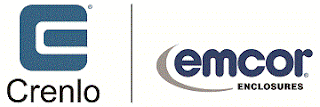– Steven Leidig, manager of enclosure engineering at Crenlo (www.crenlo.com/enclosures), says:
Building an efficient data center requires significant analysis of a variety of factors, including the number and type of servers needed, expected power usage, cooling requirements, airflow design, footprint, layout, cabling paths and more. Each of these considerations can affect the others, and as such, the rule of thumb is that procurement should not take place until the design has been firmly established — a rule that is often broken, especially during procurement of server racks and enclosures.
As the units in which the equipment will be installed, server racks and enclosures are arguably the components that will be most dependent upon all the other data center design factors. There is no one-size-fits-all solution when it comes to the enclosures; yet often, they are treated as such. VLC Media player
As the manager of enclosure engineering at Crenlo, I am responsible for the design of custom and new enclosures for our company. In my 18 years as an engineer, I’ve spotted a trend that I believe is not only causing delays in data center projects, but also driving up the long-term costs of operation.
When we get a purchase order with little more information than cabinet width and depth, that’s a sign that either the procurement of the enclosures is taking place too early in the design process, or there is a gap in communication between the data center designer and the person procuring the equipment. This problem is so prevalent, that in the last year, about 17 percent of our incoming requests for custom or modified enclosures provided too little information for us to be able to fulfill the order. We estimate that the lack of information provided on each of these requests delayed manufacturing by an average of 19 days.
See Figure 1.
In addition to delaying how quickly the customer receives the product, providing too little information to the supplier can result in a product that will lead to even more project delays and increased costs during and after installation.
Today’s enclosures are available in nearly limitless configuration options — in terms of size, modularity, shelving, weight load capacity, accessories, side panels, doors, bases, shielding and finishes. A buyer who doesn’t make these configuration decisions based on the overall data center design is bound to experience increased costs related to things such as inefficient access to serviceable components, the necessity for costly in-house modifications, lack of flexibility for future growth, inefficient airflow design and more.
In order to avoid the aforementioned delays and costs, I recommend that procurement not take place until seven key questions about data center design can be answered by the buyer.
Stay tuned for Parts 2 and 3 of this three-part series from Steven Leidig, manager of enclosure engineering at Crenlo.


